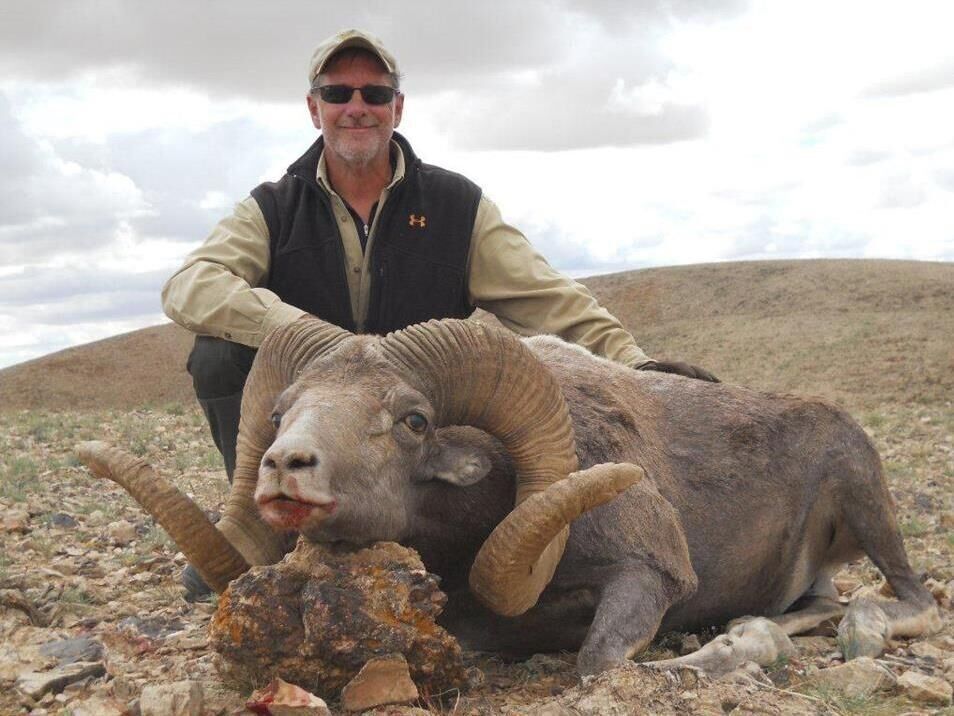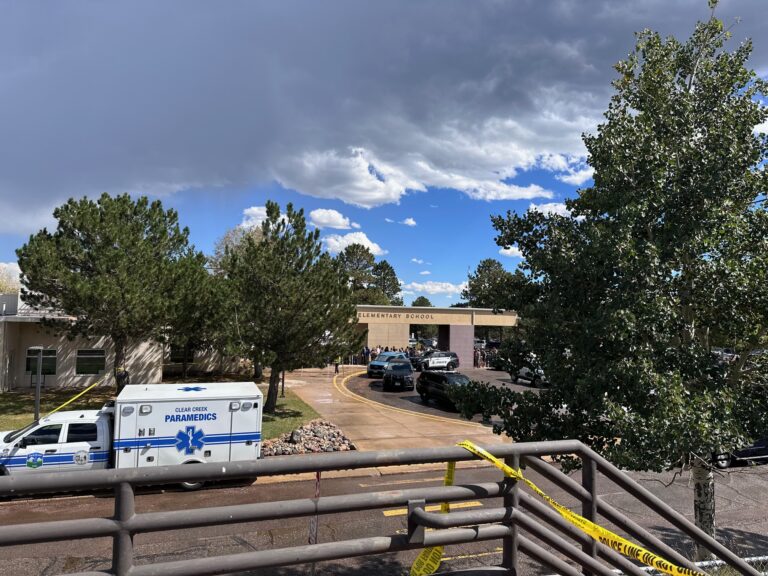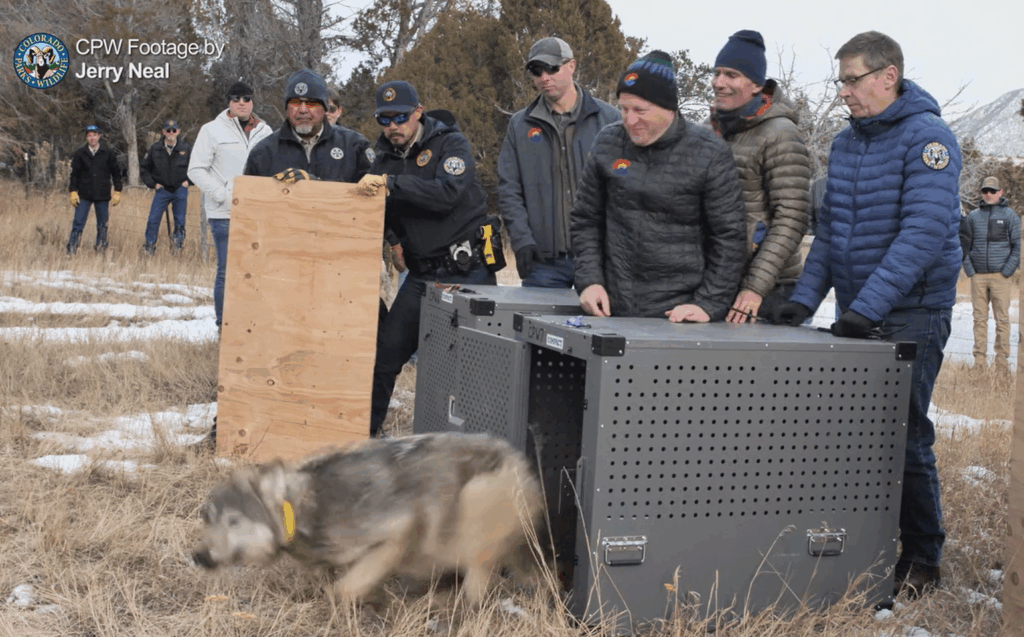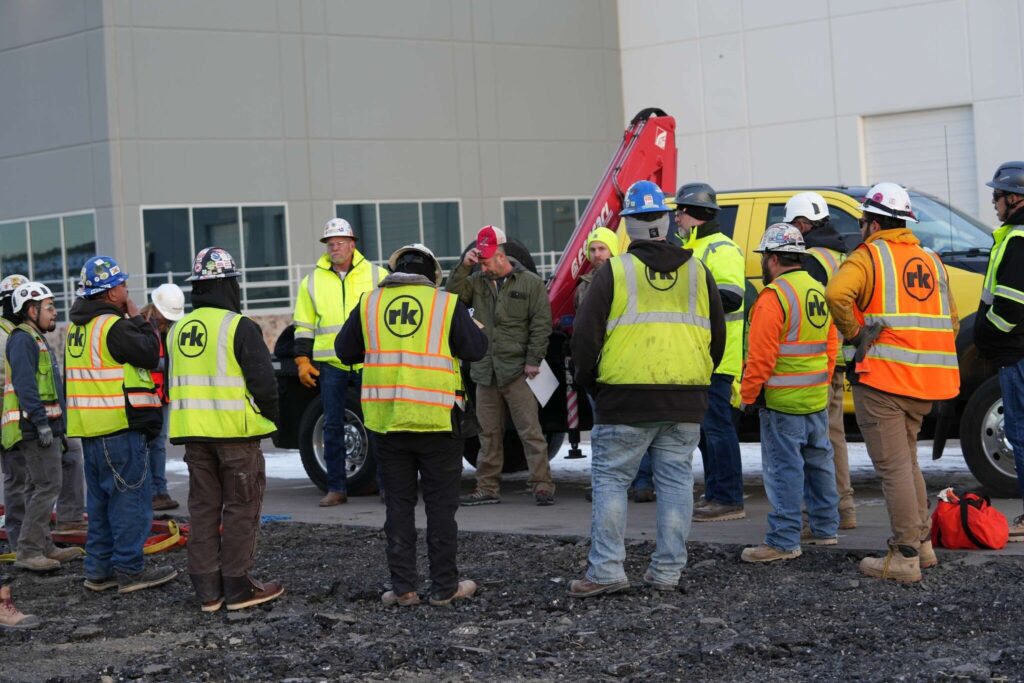Colorado River: Western Slope water conversation plans to focus on recreation, agriculture and habitat
The Upper Colorado River Commission recently signed a memorandum of understanding with the U.S. Bureau of Reclamation that will require the body to implement water conservation and “demonstration” projects in 2025 and 2026.
That plan allows the upper division states of Colorado, Wyoming, Utah and New Mexico to take credit for water savings that will flow into and be stored in the upper Colorado River basin reservoirs.
The agreement could also resolve one criticism of the conservation programs paid for by the commission — that while the body is spending millions of dollars to save water through its System Conservation Pilot Program, there isn’t any actual tracking of those savings, leading to claims that those water savings just flow down the river to the Lower Basin states.
It could also assuage concerns raised by the Lower Basin states of Arizona, California and Nevada that the Upper Basin states aren’t doing their fair share to conserve water.
The Nevada Water Authority raised that complaint in December 2022, suggesting the upper states needed to contribute at least 500,000 acre-feet of water to the shortfalls in the river’s largest reservoirs — Lake Mead, which goes to the Lower Basin states, and Lake Powell, the water “bank” for the Upper Basin states.
So, what does a “demonstration” project look like?
Efforts are ongoing, including with funding from the Colorado Water Conservation Board, to find ways to conserve water and bolster the resilience of the Colorado River within the Centennial State’s borders.
Recently, the Water for Colorado Coalition, among the supporters of a successful ballot measure to allow the state to keep more tax revenue from sports betting and use it for water projects offered a guided tour of three water projects on the Western Slope aimed at building that resilience.
The coalition was formed to support what’s called the “Colorado Water Plan” when it was developed in 2015. It includes nine partners, including Trout Unlimited, Conservation Colorado, Western Resource Advocates, the Business for Water Stewardship and the Environmental Defense Fund.
Shoshone Water rights
First on the tour is the biggest project in the package — the Shoshone water rights, held by Xcel Energy. It’s also among the state’s largest and oldest water rights, going back to 1902.
It’s named for the Shoshone hydropower plant on the Colorado River, just east of Glenwood Springs.
That plant creates hydroelectric power by taking water from the river, generating about 15 megawatts of energy through two turbines, and then returning the water to the river. About 15,000 households rely on the power generated by Shoshone.
Shoshone turbine
The plant takes the water out of the river just east of the Hanging Lake trailhead, and funnels it through about two miles of diversion tunnels on the river’s north side and eventually through the power plant and then back into the river.
It’s a non-consumptive water right, meaning the water returns to the river without being consumed.
Last December, Xcel and the Colorado River Conservation District signed a historic agreement to transfer those water rights to the district and its partners. That would keep a million acre-feet of water that Xcel owns through those water rights in the river instead of sending it east to the Front Range.
The cost is $98.5 million, and so far, the district and its partners have come up with $56 million. The coalition hopes the last $40 million will come from the Inflation Reduction Act’s Bucket 2 Environmental Drought Mitigation (B2E). Some $450 million remains available from the act to address water issues in the Upper Colorado River Basin.
Nov. 22 was the deadline for applications.
Officials and others hope that, at a time of drought, wildfires and floods, all of which have hit the Western Slope over the past 20 years, the program will help make communities and agriculture more resilient.
Water experts said those projects add up and provide system-wide benefits.
State Sen. Dylan Roberts, D-Summit County, pointed out that water used by the Shoshone plant that returns to the river protects crucial habitats and downstream agriculture, as well as promotes the kind of health the Colorado River will need for decades to come.
That’s also where sports betting revenue comes in, he said. Between 2018 and 2025, sports betting revenue is expected to cover half, or about $43 million, of the grants tied to the state’s water plan.
It started with Proposition DD in 2019, when voters enacted a tax on sports betting revenue, with the majority of the proceeds going to water projects. The revenue was initially capped at $29 million per year, some of which goes to administrative costs.
But by 2024-25, the revenues are expected to exceed that cap. So, state lawmakers sent Proposition JJ to the ballot, asking that any revenues collected would be devoted to water projects, instead of being refunded back to the casinos that pay the tax.
Voters gave it the thumbs-up by a more than a 3-to-1 margin.
That will initially add about another $1 million in 2024-25 and $2.5 million in the next fiscal year.
Meanwhile, the state kicked in $20 million for the Shoshone purchase, partly funded by that tax revenue.
Roberts said that, with the revenue cap lifted, every extra dollar that comes in for water projects will help protect the state’s water future both from the decades of drought and from increased demand on the river from the six other U.S. states (and two states in Mexico) that rely on it.
Amy Moyer, director of strategic initiatives for the Colorado River District, painted a mental picture of just how important those water rights are for the river’s future.
The Shoshone power plant is right at the midpoint between the Continental Divide and the state line with Utah, she said. Those rights are senior to the “key drivers” in the Colorado River basin for the largest reservoirs, including the trans-mountain diversions that bring water to the Front Range.
Those are reservoirs like Green Mountain and Dillon, which supply water to Denver. The state and federal government built 12 major tunnels, largely through the Divide beginning in the 1930s, with the largest being the Colorado Big-Thompson, which supplies water to the northern Front Range.
The stretch of the river affected by the Shoshone rights is just 2.5 miles out of the river’s total length of 1,450 miles.
While the river district and its partners are buying the water rights, Xcel will continue to use the water to generate hydropower for the foreseeable future.
“What we’re doing is adding another mechanism to be able to continue to use these water rights permanently in the future, allow them to be used for instream flow purposes (such as recreation, ag and aquatic habitat) and maintain this historical flow regime that we’ve all understood and used since this power plant” began operating in 1909,” Moyer from the Colorado River District said.
Why now?
The Western Slope is at the epicenter of increased temperatures and decreased stream flows that are exacerbating temperature issues, as well as creating water quality issues, Moyer said.
“It’s imperative that we look for these legacy-level permanent solutions to build resiliency in our basin,” Moyer said.
It’s not without risk, among the biggest of which is wildfires.
The Grizzly Creek fire in 2020, and rockslides and mudslides that followed, damaged transmission lines and shut down the plant. The rockslides and mudslides dropped sediment and salinity into the river, which impacts water quality. The power plant also was shut down for 10 months in 2007, when a penstock — a type of enclosed pipe that moves water — ruptured, flooding the plant with water and debris.
The Shoshone flows bring water security, Moyer said, as well as water quality improvements to agriculture, “which is the heritage and fabric” of the Western Slope.
The river district hopes to have the entire deal, which includes a trip to water court and an instream flow agreement with the state, completed by December 2027. Xcel also must seek permission from the Public Utilities Committee for the transaction.
The 15-Mile Reach
The 15-Mile Reach is a segment of the river from Palisade to Grand Junction. It starts at the Vineland Power Plant just east of Palisade and travels through the heart of some of the Western Slope’s most prized agricultural assets — orchards that grow peaches, apples, pears, plums, cherries and wine grapes, along with hay, grass pasture, corn, vegetables and specialty crops, such as lavender and hops.
It’s also home for recreational use and aquatic habitats that have been threatened over the years because of drought that has led to critical low flows, particularly during late summer and early fall.
According to the Colorado Water Trust, the 15-Mile Reach project boosts flows for endangered fish species, such as the Colorado Pikeminnow, Bonytail, and Razorback Sucker. Water from this project has at times accounted for up to half of the water in the 15-Mile Reach, about 10,507 acre-feet per year.
Jackie Fisher, the district manager for Orchard Mesa, explained that in 2019, the Colorado Water Trust and its partners, including cities and farmers, began leasing water from Ruedi Reservoir, which connects to the Roaring Fork River and onto the Colorado, 170 miles east of Palisade.
That’s where the Vineland Power Plant comes in.
The water flows to the power plant, operated by the Orchard Mesa Irrigation District and the Grand Valley Water Users Association, which then uses hydropower to deliver that water to the 15-Mile Reach. The increased flows boost water delivery to farmers and protect the fish at a time of year when the flow is at its lowest.
Part of the cost also meant retrofitting the plant, which the trust helped fund. Fisher said the trust provided a grant of about $425,000.
Since 2020, the project has put more than 3 billion gallons of water into the river, at a cost of just over $715,000.
“We’re not investing in a water right,” Fisher said, “we’re investing in the facilities that continue to bring senior water West. That’s just important for the entire Colorado River system.”
The project brings about 4,000 to 5,000 acre-feet of water into the reach during late summer. It’s not a lot, Fisher said, but it’s significant, and the timing is at the most productive for farmers in the Grand Valley and to keep flows high enough to support the endangered fish in the river.
Alternative forage crops
The last stop on the tour wasn’t on the Colorado River, but it showed the kinds of alternatives that could help conserve more of the river’s resources.
It’s long been acknowledged that 80% of the water in Colorado goes to agriculture. So, in a time of megadrought — the new normal, as some experts have called it — will farmers be willing to adjust their practices to help save some of that water?
Perry Cabot of Colorado State University is betting on it.
Just north of Fruita sits the Western Colorado Research Center, part of the university’s extension service that includes an Agricultural Experiment Station and the Office of Engagement and Extension.
It’s known as “Perry’s Station.”
The center is a farm, where researchers test alternatives to water-thirsty alfalfa and grass hay that accounts for much of the water use in the Upper Colorado River Basin.
At the research station and five other locations on the Western Slope, field trials on a variety of forage crops are underway. Those trials, conducted at different elevations, look at which forage crops would hold up better under dry conditions.
The difference matters. Some communities get 50 frost-free days a year; in lower elevations, it can be as much as 180 days a year.
Hannah Holm of American Rivers said the “grand theory is if we can find less thirsty hay crops, it’ll take some pressure off the system and off rivers.”
“And that’s why American Rivers cares about this,” she said.
It would be a benefit to farmers if they could have a different kind of hay crop to feed their cattle, even if the water runs short sooner, she said. Then there’s the issue of farmers being willing to take money to use less water or even fallow their fields. The field tests could show how long it takes a hay field to recover, after going without irrigation for a year. It’s a big risk.
But if a different kind of hay crop bounces back faster, it would make it easier for a farmer to participate in a program like this, she said.
Three crops now stand out: Kernza, a type of wheatgrass that also produces a grain that can be used in beer brewing; sainfoin, a type of legume; and, silflower. These crops use less water and could be economically viable alternatives to alfalfa and grass hay. They’re also better suited as forage for cows, given that alfalfa can make cows bloat.
These alternative crops have other benefits, as they can produce more on existing fields — 3.5 tons on a first cutting versus 2.5 tons for alfalfa, for example — and they are good for pollinators. Alfalfa doesn’t help pollinators, Colorado State University’s Cabot noted.
Here’s what a trial looks like. After the first cutting in early May — hay is usually cut three times each year — the trial looks at using less water for the second or third cuttings and see how the crops respond. They do respond well to just a little water, which could be the situation in late summer, for example.
The field tests are also high-tech, using drones to evaluate consumptive use, as well as the impacts of temperature and humidity. That tells researchers things about the health and water use rates of the plant, according to Cabot.
But the project isn’t just about alternative crops. One big issue is getting farmers to try it. The program, which was funded by the Colorado Water Conservation Board and partners at a cost of $450,000, also attempts to educate farmers about the options available to them in a hotter, drier climate.
That’s the job of Bill Szasz, a research associate who works with farmers on trying out those alternative crops.
Szasz, who has a master’s degree in soils and crops, talked about a trip to Montrose to talk to farmers who’d seen one of his presentations. They’d been trying to grow sainfoin for about five years without any luck.
That’s where his expertise comes in. A farmer might grow a crop the same way they were taught by their father or grandfather. That doesn’t always work, he said.
“That’s one of the big things when people talk about crop switching as a way to save water that sometimes gets missed,” he said. “Anytime you do anything new in agriculture, there’s a steep learning curve.”
The Maybell and Pagosa Gateway projects
Other projects that will benefit from the sports betting tax revenue include a diversion project in Maybell, on the Yampa River in Moffat County.
The $6.8 million project is one of the largest irrigation diversion projects on the Yampa and provides water to 2,000 acres of irrigated hay meadows.
Low flows here have hurt fish, especially during the irrigation season, and the Maybell reach, as it’s known, is a recreation hazard due to landslides.
The reconstruction of the diversion and headgate structures will connect two sections of floatable river, along with improving the flows to allow movement through the diversion.
Further south, near Pagosa Springs, is the Pagosa Gateway Project, which plans to increase water supply reliability for ecosystems along two miles of the San Juan River.
The $1.2 million project will create low-flow channels, improve habitat, stabilize the banks and improve fish passage, by removing abandoned cars and steel pipes, and concrete debris.
The bottom line for all these projects is that funding, whether from local entities, the state or the federal government, is critical to the future of the Colorado River, said Holm of American Rivers.
“These public funding sources are really where we’re going to help leverage each other and to build this resilience, reduce risk and help increase water security,” she said. “Instead of having random acts of resilience, you can have a wider scale, more scaled approach to these types of projects moving forward.”



















